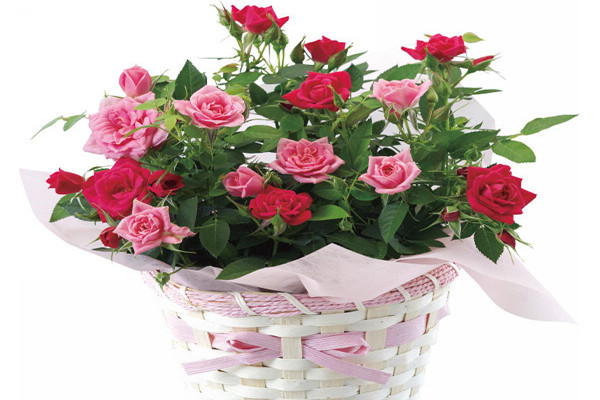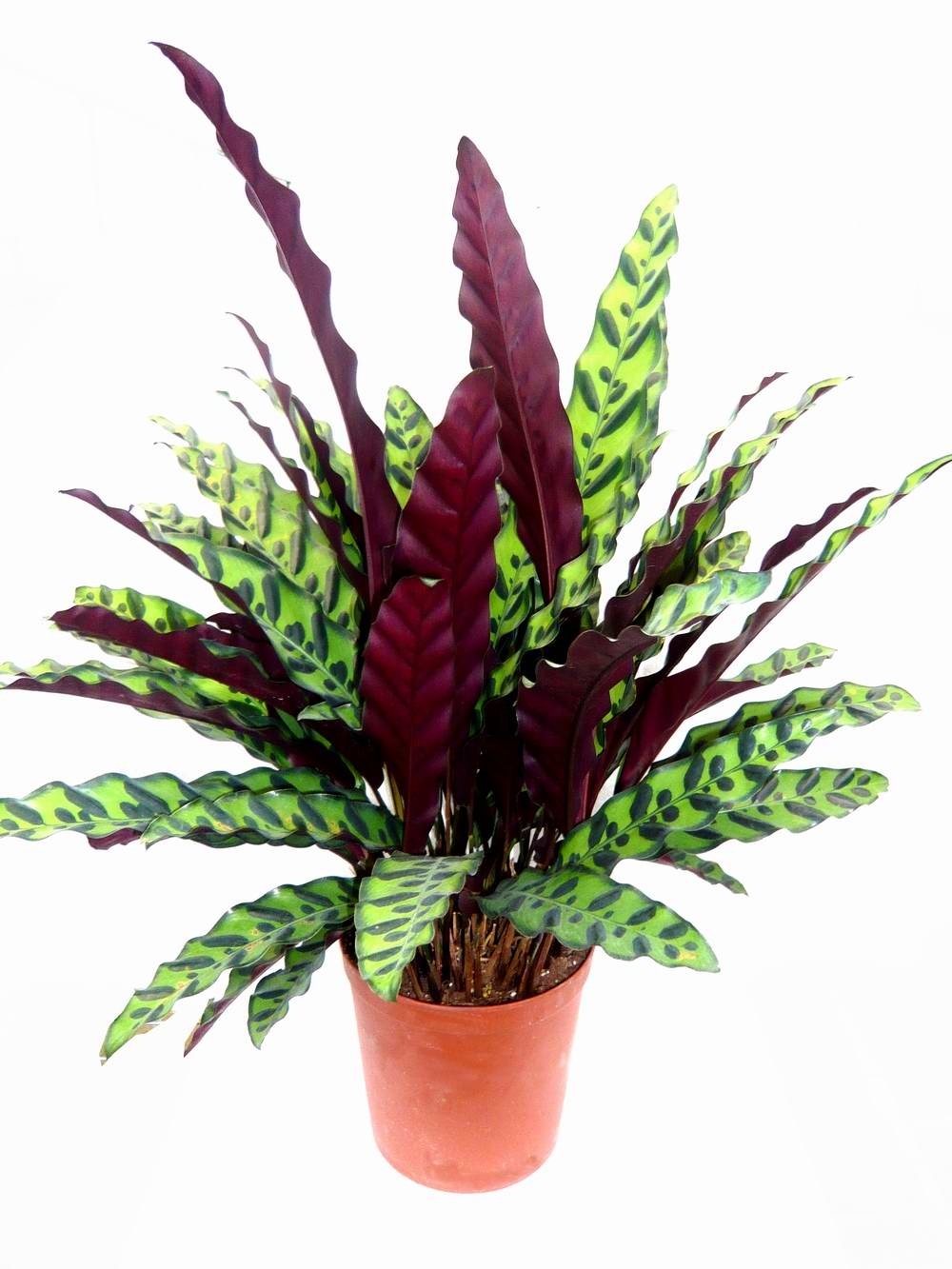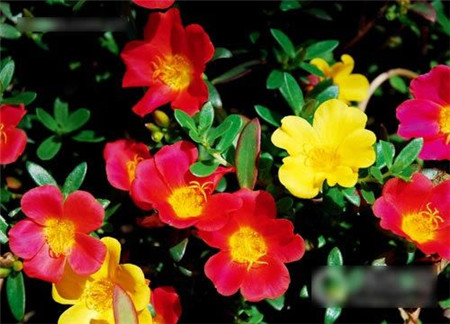Culture methods and precautions of miniature roses
Cuttage propagation
Most of them adopt the method of cutting propagation, which can also be divided into plants and striped propagation. Cutting can be carried out all the year round, but it is suitable for stem cutting in winter or autumn, and attention should be paid to water management and temperature control in summer. Otherwise, it is not easy to root, winter cuttings are carried out in the greenhouse or greenhouse, such as open-field cuttings should pay attention to increase moisturizing measures. It is used for sexual cross breeding in order to sow and breed. For a small number of famous species that are difficult to take root, they should be propagated by grafting, and the rootstock should be wild rose.
Cut the sturdy branches that had just withered flowers as cuttings, cut off the residual flowers and lower leaves, and left the upper 1-2 leaves, soaked in 0.05 ‰ indole acetic acid or naphthylacetic acid for 1-2 hours, then cut and rooting in about 15-20 days.
Grafting propagation
Thornless roses are commonly used as rootstocks for branch grafting in early spring or bud grafting in growing season, especially for bud grafting.

Watering of miniature rose culture method
The small roots of miniature rose plants are shallow. Before germination in spring, the basin soil should be kept moist, and the soil should not be watered. After germination, the amount of water should be gradually increased. Generally, it should be watered once before 10:00 in the morning and properly in the afternoon according to the dry and wet condition of basin soil. In summer, water should be watered once in the morning and evening, but not at night.
Fertilizer application
Miniature rose likes fertilizer. When the growth is exuberant in spring and autumn, topdressing once every 10-15 days, both organic fertilizer and compound fertilizer can be used. Fertilization should be stopped in high temperature season in summer and low temperature in winter.
Reproduction
The propagation of miniature rose mostly adopts the method of cutting propagation, and it can also be divided and striped.
Cuttage can be carried out all the year round, but it is suitable for stem cutting in winter or autumn, and attention should be paid to water management and temperature control in summer.
At the same time, grafting can also be used to propagate. Thornless rose is commonly used as rootstock, branch grafting is carried out in early spring or bud grafting is carried out in growing season, especially the bud grafting effect is better.
Matters needing attention in miniature rose culture
After the flower fade, part of the branches should be cut off, leaving 2-3 nodes of new branches and then cut off, and more than 2 nodes of the cut branches should be used for cutting propagation. Winter pruning is mainly plastic pruning, first cutting off withered branches, disease and insect branches, cross thin and weak branches, and for plants with strong growth and symmetrical plant type, cut off 1 inch of the whole plant. For the plants with weak growth, about 2 prime 3 of the whole plant was cut off, leaving 3 strong main branches.
Turn the basin
Turn the basin every 1 to 2 years, remove about 2% of the old soil, and replace it with loose, fertile soil rich in organic matter. It is mostly carried out before sprouting in spring, combined with turning the basin, cutting off withered roots, rotten roots and disease and insect roots, cutting too long roots, thinning out dense roots and part of old roots, promoting its germination of new roots and making its growth exuberant.
Pest control
The main diseases of miniature rose are powdery mildew, gray mold and black spot, and the common pests are aphids, red spiders and leaf-cutting wasps.
The main control method is to carry out scientific cultivation, enhance plant disease resistance, and remove dead branches and leaves in time. In addition, you can go to the flower market to buy special chemicals for spraying and killing pests.
Culture methods and precautions of miniature rose how to raise miniature rose
Miniature rose plant type is short, spherical, many flower heads, flower color strange, because of its unique character, also known as "diamond rose", mainly for potted ornamental. How to raise miniature rose? Today, the editor will share with you the breeding methods and matters needing attention of miniature rose.
Culture methods and matters needing attention of miniature rose
Selection of pots: miniature rose should choose flowerpots with a diameter of about 20 cm, and purple sand pottery pots are the best.
Use soil: choose loose, fertile soil rich in organic matter.
Planting: transplanting with soil in spring or autumn, watering root water in time after planting, and placing it in a bright and ventilated place. After the seedlings are planted and survived, they should be pruned a little to promote their more branches in order to achieve the effect of blooming flowers and leaves.
Place: should be placed in a place with sufficient light and air circulation, and should be properly shaded when it is hot in midsummer. Miniature rose is more hardy and can be put outdoors in winter.
How to raise miniature rose
Watering: the small root of miniature rose plant is shallow, the basin soil should be kept moist before germination in spring, the soil should not be dry and irrigated, and the amount of water should be increased gradually after germination, once before 10:00 every morning, and appropriate amount of water should be watered according to the dry and wet condition of basin soil in the afternoon. In summer, water should be watered once in the morning and evening, but not at night.
Fertilization: mini rose likes fertilizer. When the growth is exuberant in spring and autumn, topdressing once every 10-15 days, both organic fertilizer and compound fertilizer can be used. Fertilization should be stopped in high temperature season in summer and low temperature in winter.
Pruning: cut off part of the branches after the flower fade, leave 2-3 nodes of the new branches and then cut off, more than 2 nodes of the cut branches are used for cutting propagation. Winter pruning is mainly plastic pruning, first cutting off withered branches, disease and insect branches, and intersecting thin and weak branches. For plants with strong growth and symmetrical plant type, cut off 1 inch of the whole plant. For the plants with weak growth, about 2 prime 3 of the whole plant was cut off, leaving 3 strong main branches.
Turn the basin: turn the basin every 1 to 2 years, remove about 2% of the old soil, and replace it with loose, fertile soil rich in organic matter. It is mostly carried out before sprouting in spring, combined with turning the basin, cutting off withered roots, rotten roots and disease and insect roots, cutting too long roots, thinning out dense roots and part of old roots, promoting its germination of new roots and making its growth exuberant.
Disease control: the main diseases of miniature rose are powdery mildew, gray mold, black spot and so on. The main control methods are to carry out scientific cultivation, enhance plant disease resistance, remove dead branches and leaves in time, spray wine 5 Bomedo stone sulfur mixture before germination, spray 70% methyl topiramate 800 times twice every half a month after germination, and spray wine 3 times continuously for 4 times.
Pest control: the common pests of miniature rose are aphids, red spiders and leaf-cutting wasps, which can be sprayed and killed with 1000 times of dimethoate EC or 45% malathion.
How to raise miniature rose? After reading the mini rose culture methods and matters needing attention shared by the editor, you now know that the small roots of mini rose plants are shallow, and water and fertilizer management is the key to daily maintenance.
- Prev

Culture methods and matters needing attention of Peacock Bamboo Taro
Pot cultivation and management of peacock bamboo taro should use loose, fertile, well-drained, humus-rich slightly acidic loam, generally can be mixed with 3 parts of rotten leaf soil, 1 part of peat or sawdust, 1 part of sand, and add a small amount of bean cake as base fertilizer, avoid heavy and sticky garden soil. When going up the basin, the bottom of the basin is padded with 3 cm thick coarse sand as the drainage layer.
- Next

Planting techniques of sunflower
Sunflowers are very easy to survive, so the planting technique of sunflowers is very simple. Although simple, but the sunflower planting technology in the operation process should pay attention to the following points. Sunflower seeds are very small, about 8400 per gram, often sown on seedling trays and slightly covered with fine vermiculite.
Related
- Fuxing push coffee new agricultural production and marketing class: lack of small-scale processing plants
- Jujube rice field leisure farm deep ploughing Yilan for five years to create a space for organic food and play
- Nongyu Farm-A trial of organic papaya for brave women with advanced technology
- Four points for attention in the prevention and control of diseases and insect pests of edible fungi
- How to add nutrient solution to Edible Fungi
- Is there any good way to control edible fungus mites?
- Open Inoculation Technology of Edible Fungi
- Is there any clever way to use fertilizer for edible fungus in winter?
- What agents are used to kill the pathogens of edible fungi in the mushroom shed?
- Rapid drying of Edible Fungi

